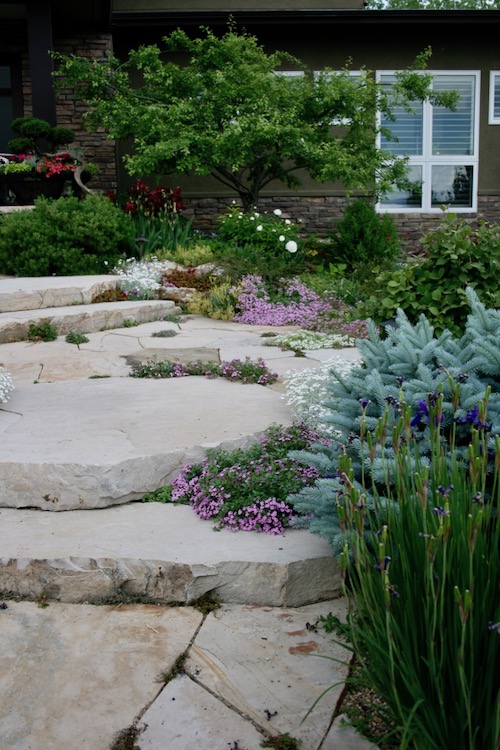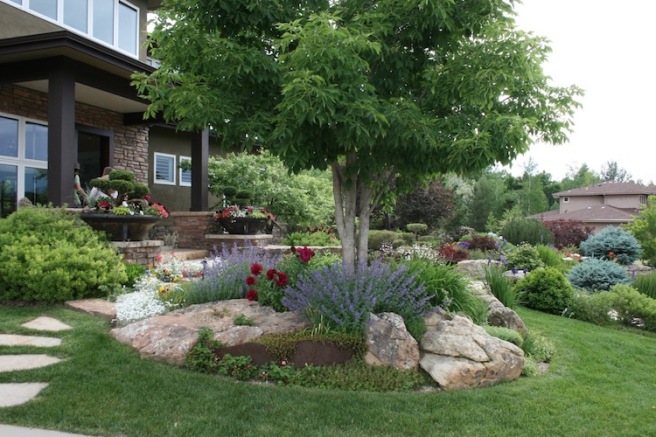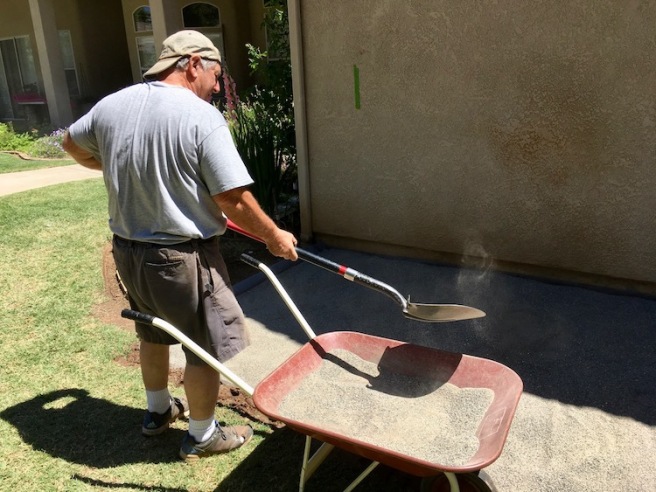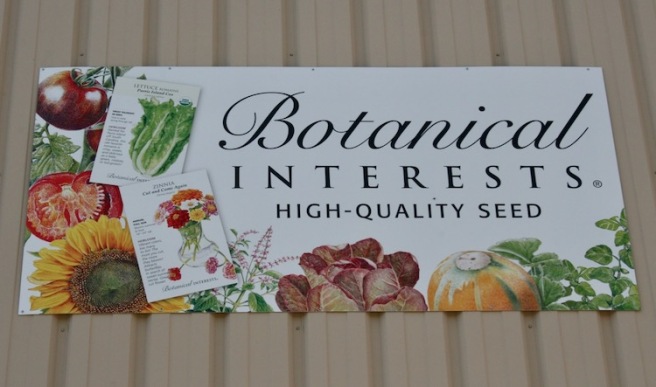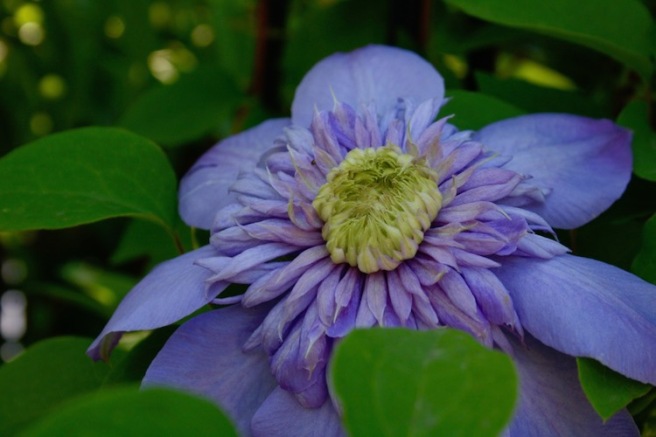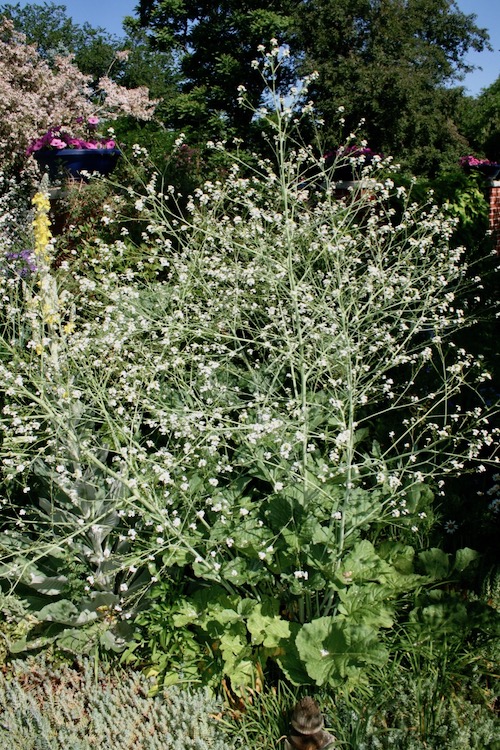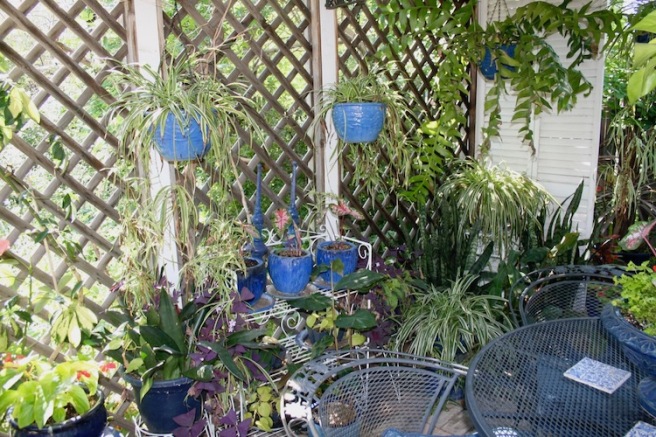
Fall can be sort of a moving target in California’s Central Valley. Some years we pull out our hoodies in mid-October and others find us Christmas tree shopping in shorts. We are not without seasons–just not sure when to expect them to change throughout the year!
Whenever it gets here, fall is my favorite season in the garden. It is certainly not the most attractive as many plants, even those not naturally winding down their seasons due to shorter days and longer nights, look pretty peaked from the ravages of the hot and dry summer. Fall is the season symbolizing another year of work well done in the garden with a little time for reflection, planning and rest on the horizon. Our short, relatively mild winters make attention to the garden in fall even more critical.
This year our spring was cooler, longer and wetter than average and the summer days in the triple digits were fewer than many years–all in all a summer worthy of rejoicing. That being said, as I write this post temps for the next few days range from 89° to 98° with a definite cooling trend into the 70s at week’s end. The last couple of weeks we have had cooler early mornings well suited to getting going on fall garden tasks and some light winds which seem to have made the mosquitoes less active–always a plus.
Last year every available gardening minute from September through the end of the year was devoted to the last phase of the front garden’s lawn removal/bed replanting effort. The back garden was left to fend for itself–roses were never pruned, perennials not cut back, winter annual weed pre-emergent never scattered, and humsy mulch never refreshed. I think you get the picture…
Like the 5 year old who feels neglected amidst the excitement of a new baby in the house, my back garden has both pouted and gone wild. It’s time to get back to a more normal rhythm for both gardens and see what can be refreshed (or just plain salvaged) in hopes that after a little winter’s nap it will reward me with another year of fresh foliage or bright blooms.
First on my hit list are the vigorous clumps of Viola ‘Royal Robe’ which have all but taken over the shade bed adjacent the back patio. Below you see some of the smaller clumps nestled up against Helleborus x hybridus ‘Double Queen’ and Geranium ‘Brookside’

The hellebores can hold their own against this thug but many of the bed’s less substantial ground covers like the lime green foliaged Campanula ‘Dickson’s Gold’ are all but lost. Don’t get me wrong–I love the violets. I generally thin them drastically in the early fall as they are ready to reseed with the goal of keeping enough in the bed to enjoy the flowers without them turning into the playground bully. Without last year’s thinning, they reseeded prolifically and just about every open space in the long bed looked just like the above photo.

It took me about 9 hours spread over several days to dig out every clump, large and small, figuring there was enough seed already dropped to have gracious plenty come back next year. Each one of the seed pods forming at the base of the plant contains dozens of seeds and I swear every single one germinates in this bed which stays relatively cool and moist. The clumps, even with the dirt shaken off the roots, filled almost four trash cans.

I also trimmed back the sun scorched maidenhair ferns, cleaned up the iris foliage, trimmed off any hellebore foliage with snail damage and pulled off all but the freshest foliage from all the hardy geraniums. All that turned up soil resulting from the violet digging begged for a layer of enriching humus to be dug in. A light dusting of granular pre-emergent seemed warranted to minimize germination of any seeds churned up to the surface.
Dave did the heavy digging and lifting to remove two huge clumps of Dianella tasmanica ‘Variegata’ from behind the rocks of the pool waterfall. They had originally been planted flanking the rock work in 2011 but quickly proved to be incompatible with that full southern sun location. Absent any other place to put them I dug them in behind the waterfall where they got a little shade from the boulders. When I later added some climbing roses to the fence they provided a nice foliage contrast at the base of the climbers–even though I was really the only one who even knew they were there! Fast forward to 2019 and the clumps are so large I have lost all ability to even stand at the base of the roses (wedged up against the back of the waterfall!) to do routine maintenance…and the dianellas, commonly called flax lilies, are still in too much sun to have pretty foliage. The plan was to dig them out, divide and replant in shadier locations.


Dave moved the first one into the shade of the pavilion for me and I set to pulling it apart! This one yield over 60 divisions–plenty for me to replant in my yard and pass along to gardening friends. Much of the literature about dianella indicates that they can be invasive as they spread by underground runners. My guess is that they probably need to be in good rich and moist soil to become a pest. Although my clumps grew quite large over many years each was very compact. The striped foliage of this species makes a nice contrast in areas of predominantly green foliage. Flax lilies bear small clusters of starlike blue flowers, followed by bluish purple berries, on narrow stems held above the foliage–not terribly showy. In a shady area of the replanted front garden I have added a grouping of Dianella ‘BluTopia’ which is a hybrid of Dianella prunina ‘Utopia’ and Dianella caerulea ‘Cassa Blue’–it will be interesting to see how this cousin of ‘Variegata’ will perform in a moister, shadier area.

Each of the back gardens beds in turn will get a little love over the next few weeks. Working early in the morning and in easily managed chunks of tasks I hope to get through everything needing attention by mid-October.

This small poolside bed anchored by a ‘Purple Pony’ ornamental plum needs only a light deadheading of the pink Sunblaze® miniature roses and ground hugging purple Salvia ‘Gleneden’ PPAF. Several large clumps of Aristea ecklonii on the far side were groomed soon after their early summer blooms faded. They are aggressive reseeders and I have learned to remove the spent flower stems religiously after a few seasons of digging scores of volunteers on my hands and knees. Almost done here–I’ll be on to the next bed soon!
I hope you are all enjoying your almost fall gardens–whether you are blessed with actual autumn weather or are just in a fall state of mind.







